Make a Windows 10 Recovery Drive Before Your Need It
Windows 10 has all kinds of back up features, from system restore to File History to System Reset – and there’s even an image backup feature in Windows 10. But what happens when your computer won’t boot at all and you can’t get into your computer to get to those backups?
That’s where a Windows 10 recovery drive comes in handy. You can boot your computer with a Windows 10 recovery drive and access troubleshooting tools that will help you troubleshoot and fix problems with your PC, even if you can’t start your computer normally.
To create a recovery drive, all you need is a USB drive. If you’re using Windows 10 32-bit, you’ll need at least an 8 GB USB flash drive; for 64-bit Windows 10, you’ll need at least a 16 GB USB flash drive. Your flash drive will be formatted during the recovery drive creation so make sure the flash drive you use doesn’t contain anything you need; a brand new flash drive would be the best option.
OK with that out of the way, let’s get started.
Place the appropriate USB flash drive in a USB port.
Press the Windows Key + S and in search box type: “Create a recovery drive” (no quotes). When it appears in the search results, click it.
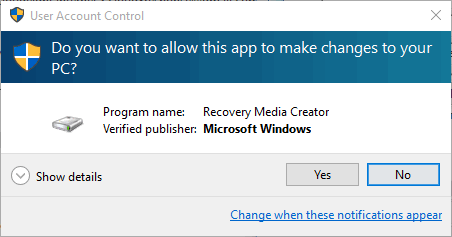
Click yes to the UAC prompt (above):
You’ll then see the “Create a recovery drive” dialog. Make sure “Back up system files to the recovery drive” is checked, then click “Next”.
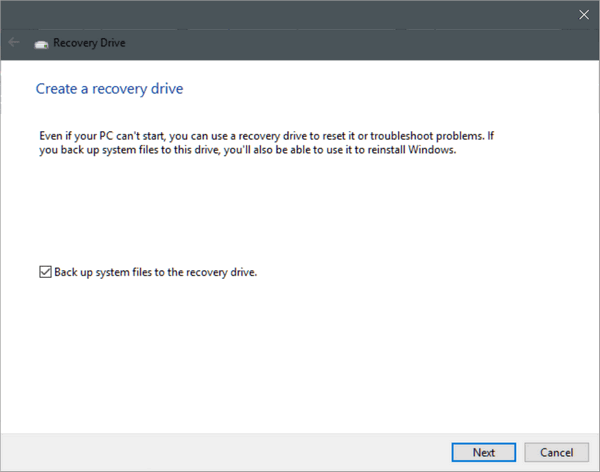
Then you’ll see…
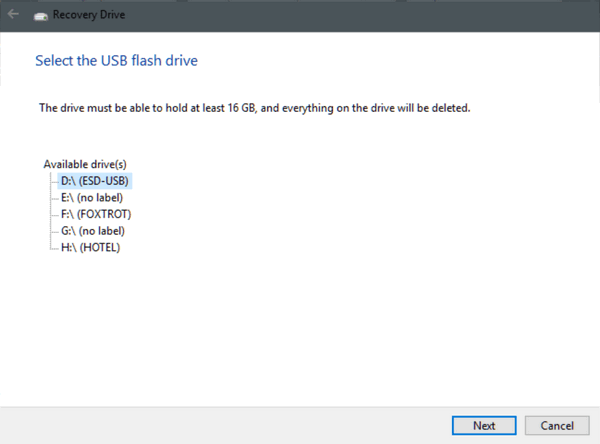
After Windows scans for drives on your computer, it should find the USB flash drive you inserted earlier (see below). If the drive is correct, click “Next”. If not, manually select the USB flash drive you want to use to create the recovery drive, then click “Next”.

Then you’ll see a warning (below), that all data on your USB flash drive will be deleted.
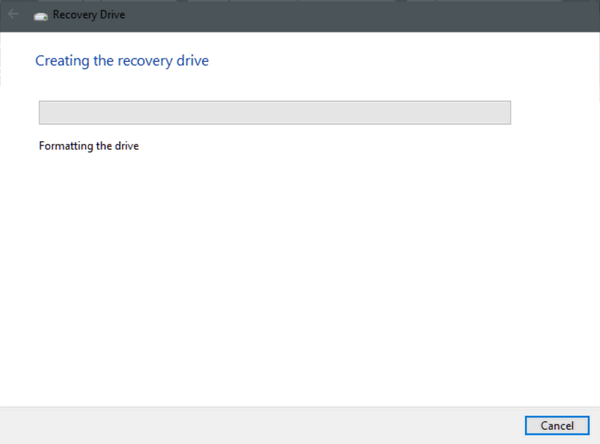
If you’re sure the USB flash drive contains no files or data you need, click create (below). When you click “Create”. you’ll see that the recovery drive being created and a progress bar is displayed (below):
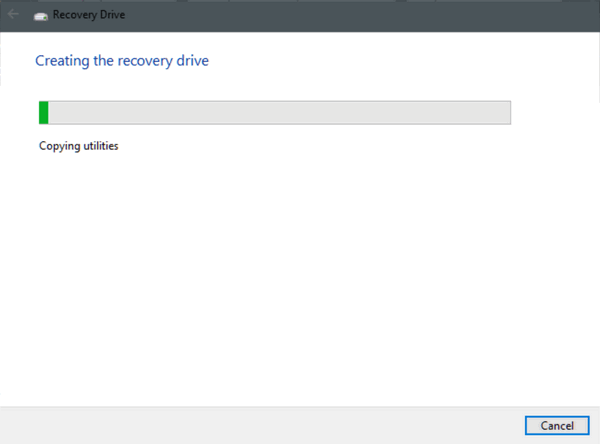
It takes a few minutes to create the Windows 10 recovery drive. When it has been created you’ll see the dialog below.
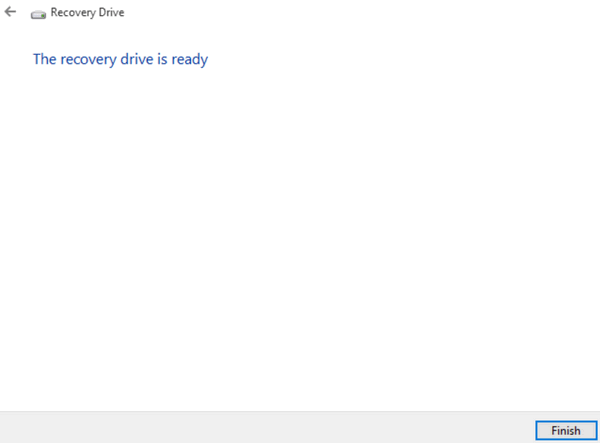
Remove your new recovery drive from the USB port, label it “recovery drive” (or whatever you want) and keep it in a safe place. Hopefully, you’ll never need it, but if a day comes when your computer won’t start, your Windows 10 recovery drive could make your computer life a lot easier.
Remember: Even if your computer won’t boot, you can use your recovery drive to boot your computer and access all the Windows 10 troubleshooting tools or your backups. When using your recovery drive, make sure you unplug all other external USB hard drives. Check with your computer manufacturer to check to make sure your computer’s boot order allows for booting from USB. Most computer two years old or newer will boot from a USB drive.
It takes only a few minutes to create a recovery drive. Hopefully, you will never need it. But it’s better to have it and not need it, than to need it and not have it. Right, EB?


I did this right after I upgraded to WIN10, so thought I was covered. Then WIN 10 did their first Anniversary update and we seemed to have some troubles. Went to update a program, did the restart and nothing ….. I mean literally, nothing. I even tried to start in Safe Mode. I raced to get the disk I had made. Guess what? The machine would not boot from a USB. My suggestion would be to make sure that whatever you have used for your backup ~ disc or USB, that you make sure your machine will boot from it.
Almost all newer computers boot from a USB drive, but not all. Many older computers do not. But I don’t want to get into BIOS settings because it’s too technical. Visit your computer manufacturer’s site and see how to change the boot order to :
1. USB
2. DVD/CD
3. Hard Drive
That has to be the boot order. It means your machine will check for a boot device in a USB port first. Then for a CD/DVD. Then if there is nothing bootable in the USB or DVD/CD drive, it will boot from Windows (Hard Drive).
It’s also possible you had other things plugged into USB ports like External Hard drives. I have edited the article to say – unplug all other USB drives.
Thanks,
I have 1 Windows 10 AIO and 2 Windows10 laptops, all 64 bit anniv edition. Will one boot disk work for all the computers or are the specific to each computer?
i made a recovery DVD will that work just the same or is this a different thing?